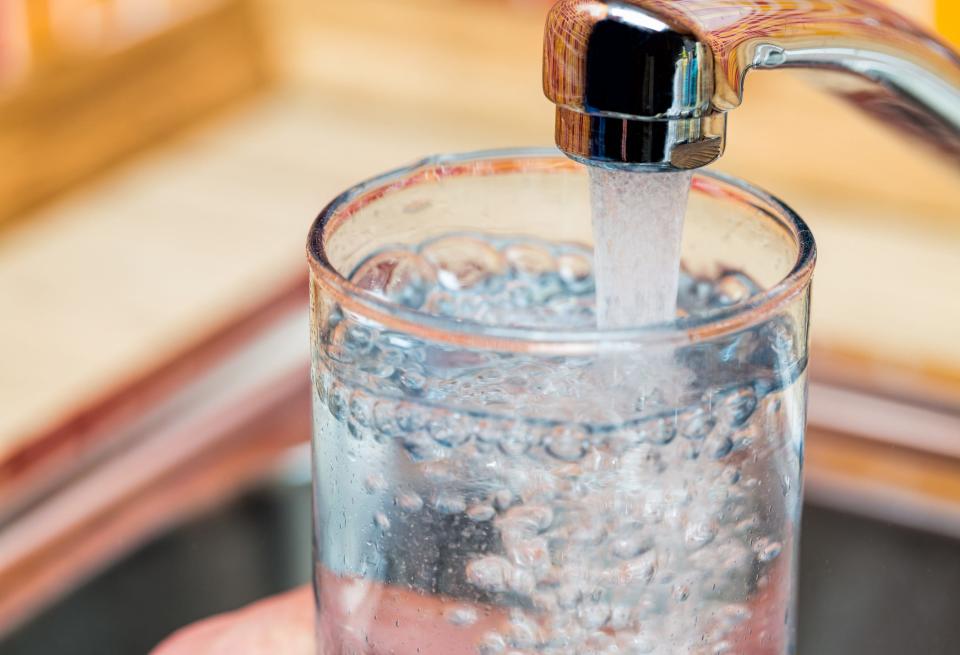Fall River water and sewer rates rising significantly in 2025 budget. Here's how much.
FALL RIVER — The City Council earlier this month took the first of two votes to set water and sewer rates in the upcoming 2025 budget, and ratepayers are going to see a significant increase this year of nearly 24% in their utility bills.
But the vote to increase the rates was not unanimous.
“There are people who are really, really going to struggle with this,” City Councilor Michelle Dionne said during the April 8 council meeting.
Dionne was one of three no votes for rate increases, along with city councilors Linda Pereira and Cliff Ponte.
The City Council is expected to take up the second reading of the proposed increases on Tuesday.
The increase in 2023: Fall River OK'd another water and sewer rate hike. Here's how much more you'll pay.

How much more will you pay?
Paul Ferland, director of the Department of Community Utilities, said the average household will see a hike of approximately $133 a year. He said the average household will spend about $910.55 a year.
This year’s annual increase is up from the 2024 rate increase of $31.85 in water and sewer bills.
To break it down, water rates will increase from $3.77 to $4.24 per 100 cubic feet of water. Sewer rates will increase from $6.06 to $8.11 per 100 cubic feet. Heavy industrial users will see their sewer rates rise from $2.89 to $3.86 per 100 cubic feet.
The city’s stormwater fee will not see an increase and will be maintained at $200 per year.
Ferland said the substantial increases are necessary because the department needed an additional $5.3 million increase in the sewer budget and $1.8 million for water.
One reason Ferland identified for the needed increase was the city utilities saw a drop of $1.9 million in retained earnings.
And as consumers see increases in household and business costs, the city utilities are feeling the pain too.
One example Ferland offered the City Council during the rate increase hearings was the cost of a fire hydrant has gone up from $1,800 to nearly $3,000.
“The price of things has doubled and, in some cases, tripled in the past four to five years, and we’ve done our best to keep rates down and keep our expenses down. But it's come to the breaking point where we aren’t going to be able to provide the same service without the increases,” said Ferland.
Buying Diman: Coogan says cost to build a new Diman will soar to $6.5M a year. Here's what he wants to do.
City’s been playing catch-up
It’s been no secret that, in past administrations, there were virtually no increases or the use of surplus cash from the utilities’ enterprise funds.
Perhaps one silver lining is that, according to Ferland, the water and sewer accounts are close to where it's sustainable.
“Water is right where it should be and sewer is still a little bit under but I’m comfortable that we’ve caught up from some sins of the past,” said Ferland.
Ferland said he's predicted that the city ratepayers may see a 5% increase annually over the next five years.
The city utility departments have, in the past five years, received about $70 million in alternative funding from grants and other government agencies.
Dionne has advocated for spending more of the millions of dollars in American Rescue Act Plan money on water and sewer infrastructure.
But the city’s utilities departments have received a significant number of appropriations from ARPA funding, through the $69 million portion given to the city and another $16 million from Bristol County's appropriation to Fall River, which is disbursed by the City Council.
Ferland said the water department has received $19.5 million in ARPA funds and the sewer department was allocated $3.5 million.
This article originally appeared on The Herald News: Fall River water, sewer rates increasing 24% in 2025 budget

